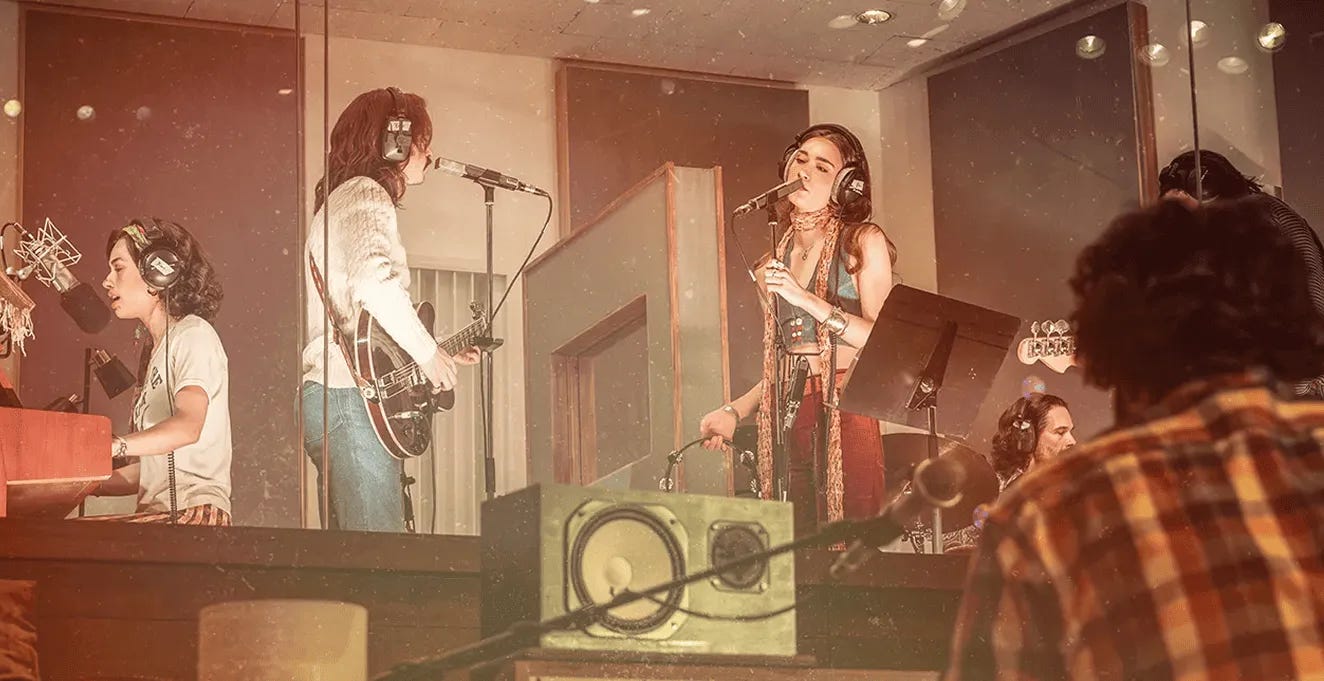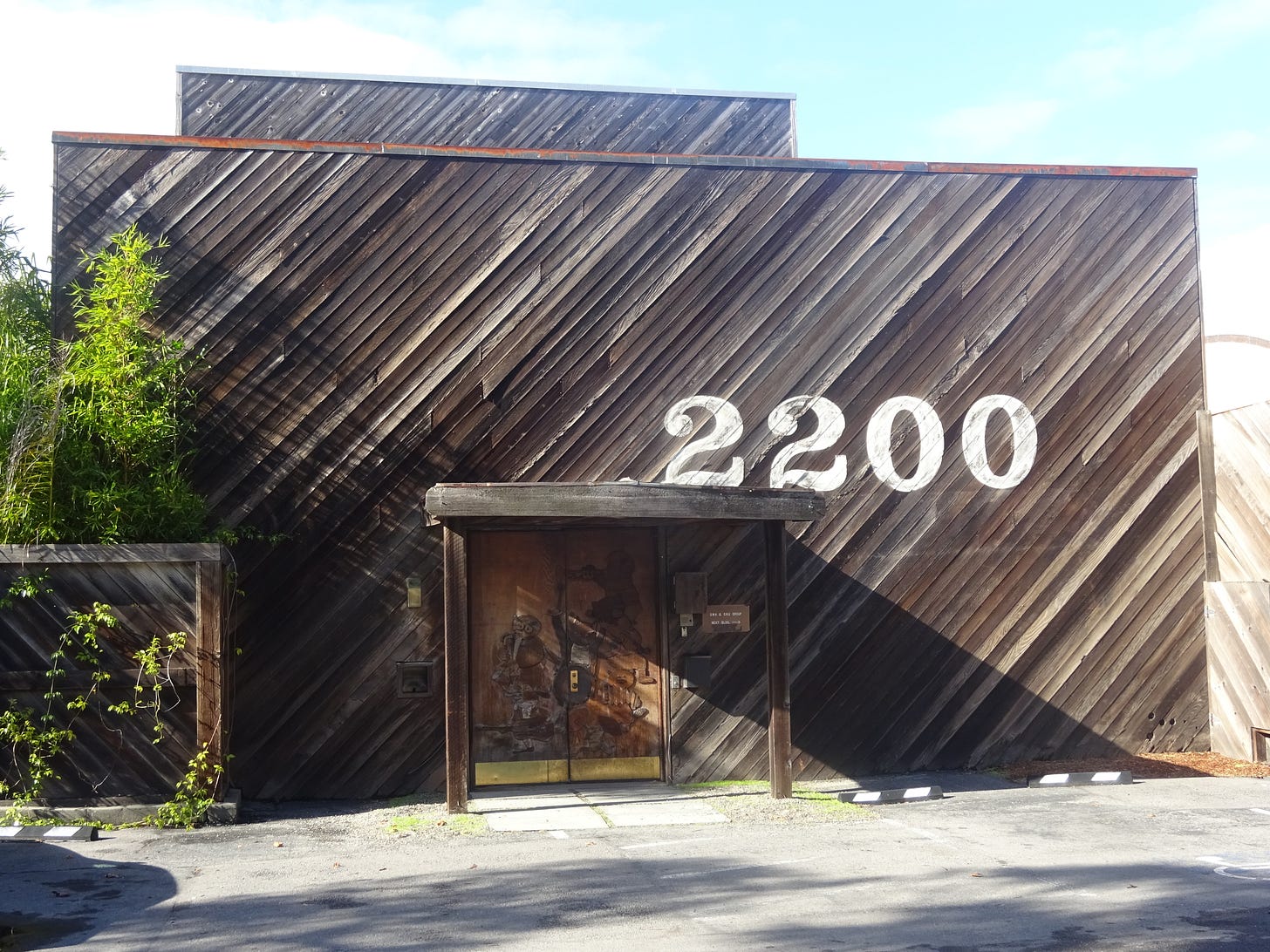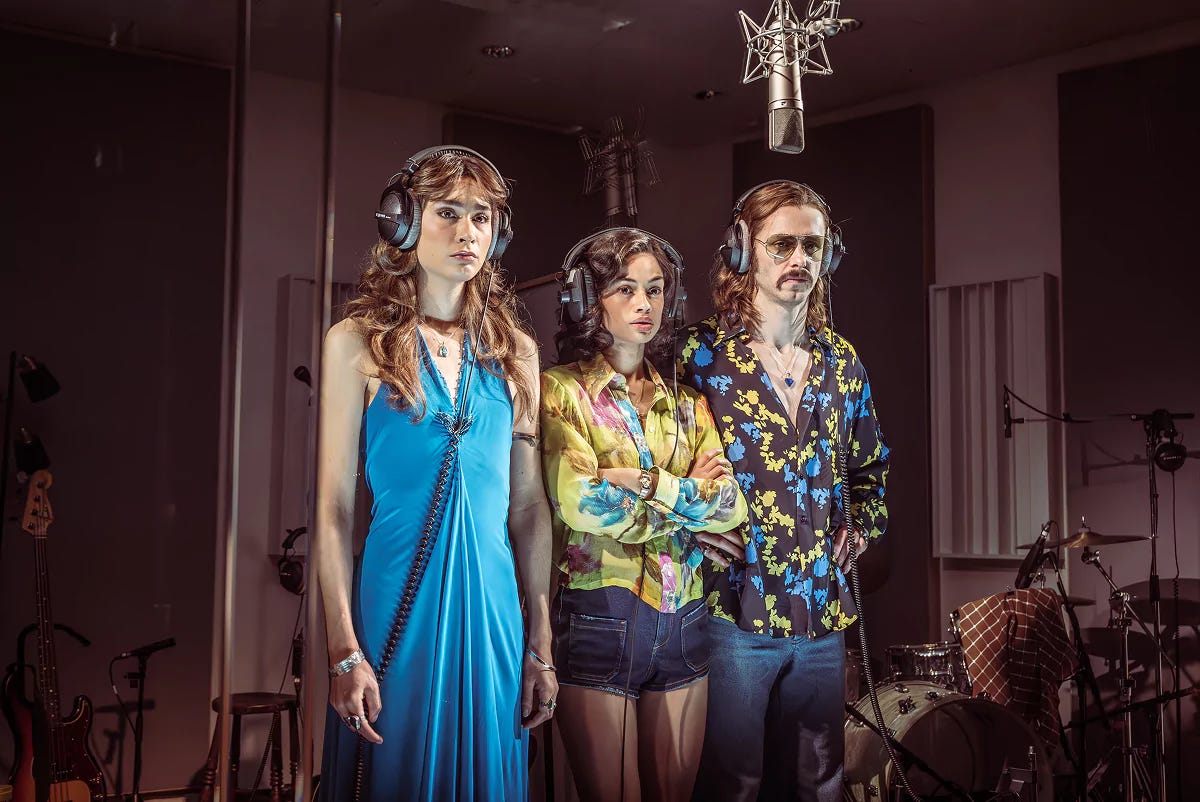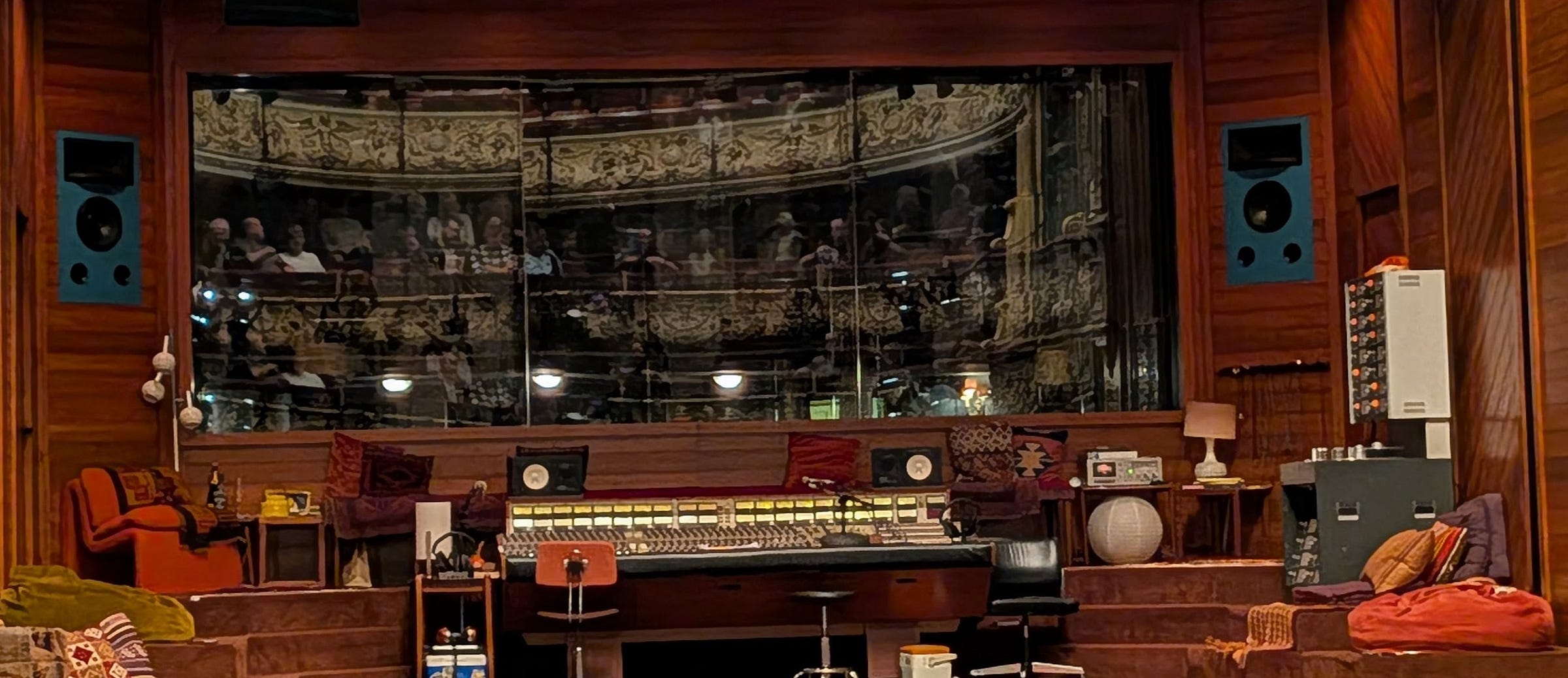Stereophonic London: The Making of Fleetwood Mac's Rumours by Another Name
Why do we need to pretend that this isn't about Fleetwood Mac's Rumours?
Imagine the scene. Sausalito, California. Spring 1976. If you stand in the right place somewhere up high, facing the right way, you will see the Golden Gate bridge shimmering like a ghost in the fog. If you look another way you can see the famous Tiberon peninsula. Over in the other direction is Mill Valley, home to the richer folks who call San Francisco home. I don’t need to imagine this scene. On 20th January, 2009, I stood outside the Record Plant studio with Amber Valletta, at 2200 Bridgeway. I had just been shown around inside the legendary musical palace by the then owners and she was looking for a film set. I couldn’t help Amber find Humboldt Avenue but I could tell her about Rumours and how its songs were written inside the building in front of us. I think she was impressed.
Fast forward to 27th September, 2025. London, England. The Duke of York’s theatre. Someone had told me to go and watch Stereophonic, a play about the making of Fleetwood Mac’s Rumours. But is it? The official programme and website barely mention Fleetwood Mac. I was completely unaware that, no doubt due to the well-deserved success of the play, there had been an unseemly court squabble (now fully resolved) about how much of the show is fiction and how much of it is based on Ken Caillat’s book. Ken and Richard Dashut were the long-suffering engineer-producers on the Rumours album. You can dig into the details here if you are so inclined. I was there for the drama, and it was first rate.
There would have been several types of audience member at this play. Absolute die-hard Fleetwood Mac fans who knew all the details already (like me and sidekick Calmer Sounds) people who ‘sort of like’ Fleetwood Mac, perhaps Millennials or Gen Z fans, and a bunch of ‘other halves’ or randoms who thought this was a complete work of fiction. All groups would have had a very good value afternoon yesterday. It is no surprise that this play received a record 13 Tony nominations. Whether Stereophonic is about Rumours or not, it is an ambitious and unique piece of drama told and acted brilliantly.
Three of the London cast were present in the American edition: the engineer-producers Eli Gelb and Andrew R. Butler, and English drummer-manager Chris Stack. When we saw the play it was Lucy Gray as Diana, the American siren-singer and tambourine girl, normally played by Lucy Karczewski. That leaves Zachary Hart as British bassist Reg, Nia Towle as the English pianist-singer Holly and Jack Riddiford as groovy Californian singer/guitarist/producer Peter, who bore a welcome resemblance to both Warren Zevon and Alexander Skarsgård. The cast was exceptional at inhabiting their characters but also as musicians and singers. I have since confirmed that they are singing and playing live during the show, with their microphones and instruments connected up to a real sound desk in the theatre. It is an impressive achievement.
Perhaps only severe Fleetwood Mac addicts would watch this for the Rumours lore such as the one about Lindsey Buckingham’s brother who won Olympic silver and held a world record for swimming. Or the one about how Christine and Stevie, sick to death of the boys and their frat house vibes, bought condominium apartments in the same building down by the harbour. Or the one about how the song Silver Springs was so long that it couldn’t physically fit onto the vinyl version of the album, an injustice caused by the technology of the time that Stevie Nicks unjustifiably blamed on Mick Fleetwood. She flat-out refused to shorten the song.
Three hours flew past, and I had the appetite for even more. Perhaps there could be a play about Tusk, the follow-up to Rumours, which as a double album took even longer to record and involved even more acrimony between our five Anglo-American frenemies. However the important point for anyone going to watch this play is that it stands on its own. You don’t get 13 Tony nominations for a fastidious musical documentary, however compelling.
Stereophonic works as a thrilling drama even for anyone who has not heard the music of Fleetwood Mac at all. It also works for someone who thought they had no interest in how music is recorded. The drama is gripping and all the main events happen in the control room at the front of the stage, with only a couple of tantrums happening behind glass in the soundproof live recording room. The play cleverly exploits this setup: some arguments are relayed to us, unseen but very much heard, picked up on live microphones, unbeknownst to those conducting ‘private’ arguments.
For music fans of any kind, for fans of the 1970s, for those few of us who actually lived during the 1970s, and most especially for Fleetwood Mac fans young and old, this is an excellent night out. The relationship between Diana and Holly is especially interesting, the only two women in the entourage around this band.
Holly is a very English (for whom ‘real’ custard is made from Bird’s custard powder) pianist-singer who had already made several records with the band, her place very much secure. The other is fragile newcomer Diana, who could ‘only’ sing and tap a tambourine, but who could write like the devil and an angel or a witch, depending on her mood and sometimes all three at the same time, and who looked like a rock star from the first second she ever stood on a stage. I found these two characters utterly compelling.
Another fantastic feature of this play is that the original cast made an entire album as part of the show which you can stream. It has grown on me in the last twenty four hours and not only for some of its Fleetwood Mac parallels. There are some really nice original songs here that evoke the 1970s perfectly.
Postscript
In my limited experience, money nearly always corrupts art. If this play had not achieved success, Ken Caillat would never have gone to see it. By his own admission (however improbably) he had never been to a Broadway show before this one. Ken Caillat wrote a book about his personal experiences that was only of wide appeal because he had a front row seat during the creation of one of the most successful records in history. Indeed, when it was first released, Rumours was the most successful original album in history. I was at the play as a Fleetwood Mac fan, but also as someone who has contracts to write two books about the (first) 60 years of Fleetwood Mac as a band, both due out in 2027. All of us are making money out of someone else’s story. But this iteration of Fleetwood Mac themselves covered someone else’s song on their first album together, Blue Letter, written by the Curtis Brothers. Music, perhaps more than any other art form, builds on those who went before. Anyway, it turns out you cannot copyright factual events on either side of the Atlantic, and thank goodness for that.





